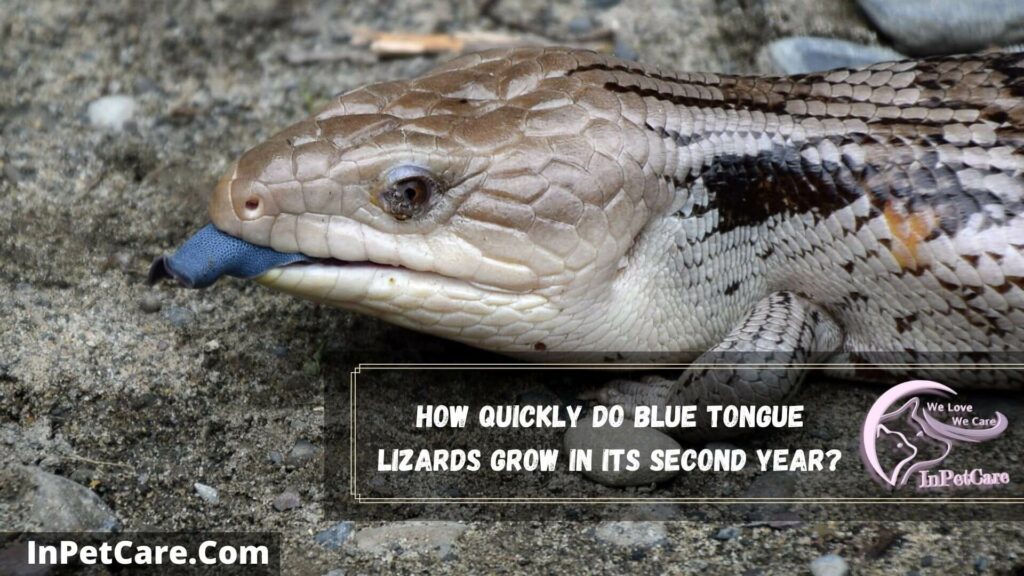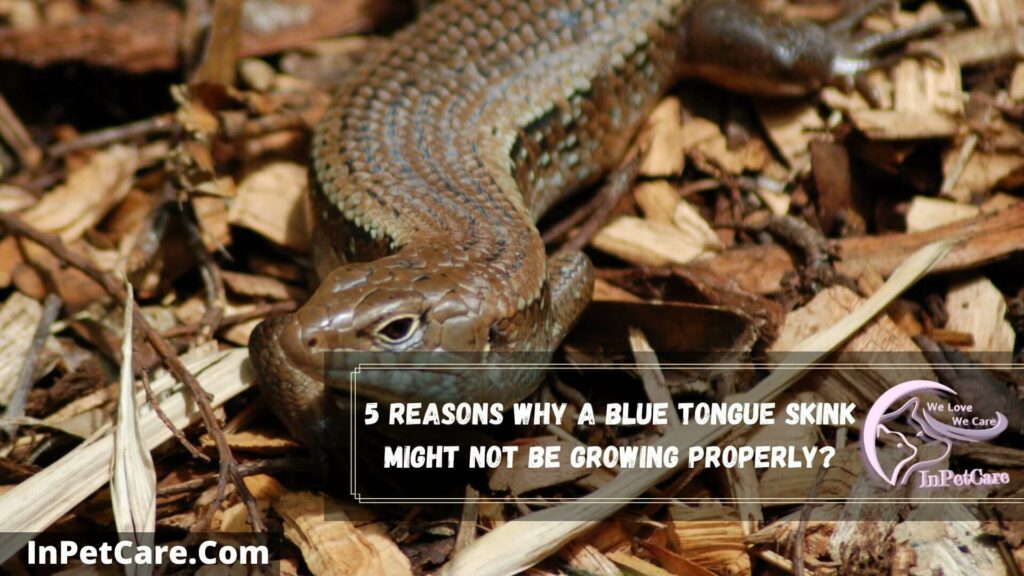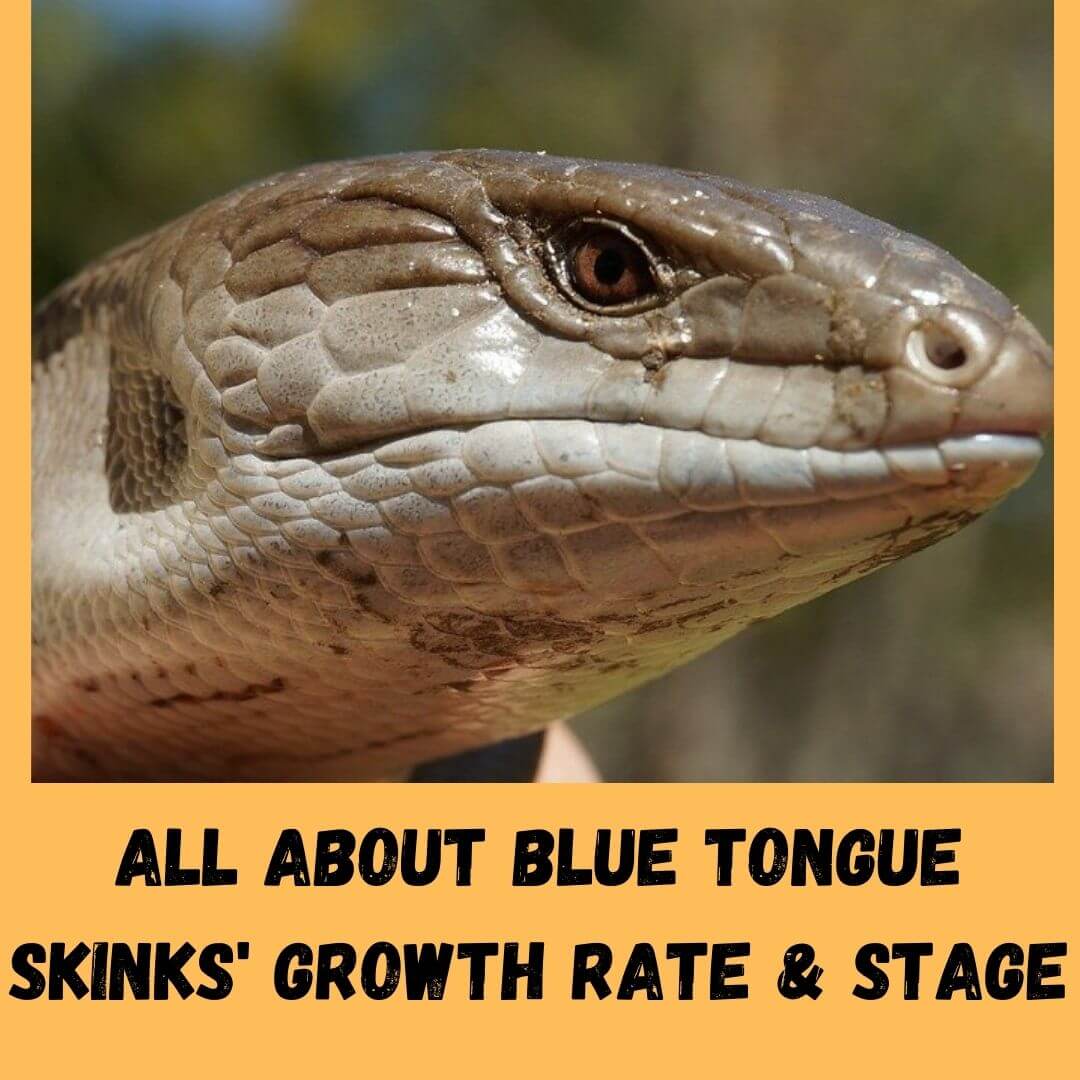It doesn’t matter if you are a new owner or an experienced owner; everybody seems to debate how fast do blue tongue skinks grow. I will answer this fascinating question: how quickly do blue tongue lizards grow in the second year as well.
In this article, I have talked about different blue tongue species and their growth rate. We will also discuss when the blue tongue skink stops growing and what factors can affect its growth rate.
Post Contents
- How Fast Do Blue Tongue Skinks Grow?
- How Quickly Do Blue Tongue Lizards Grow In Its Second Year?
- How Fast Do Indonesian Blue Tongue Skinks Grow?
- How Big Is A Fully Grown Blue Tongue Skink?
- When Do Blue Tongue Skinks Stop Growing?
- How Long Does It Take For A Blue Tongue Skink To Grow To Full Size?
- Factors For Blue Tongue Skink Growth Rate
- When Is A Blue Tongue Skink A Hatchling, Juvenile Or Adult?
- 5 Reasons Why A Blue Tongue Skink Might Not Be Growing Properly?
- Final Thought
How Fast Do Blue Tongue Skinks Grow?
In its first 2-3 months as a baby, a blue tongue skink can grow at a rate of an inch every week. The growth rate of a blue tank skink will continuously slow down from the moment they are born.
During the 4-5th month, the blue tongue skink growth rate will slow down slightly at 0.4 inches. The first year of blue tongue skink tends to have an extreme growth rate. Power feeding is something that can boost their growth further, but it’s not recommended.
When your blue tongue skink starts to enter its juvenile stage, its growth will slow down slightly even more further. At this stage, you are likely to see only one or two inches of growth a month. By the 9th month, your blue tongue skink should be anywhere between 12-20 inches.
In captivity, proper care, heating source, regular maintenance, and responsibility are required to keep their growth rate natural. In most cases, a blue tongue skink reaches 12-20 inches in length in its 11th-12th month due to stunted growth. Stunted growth can happen due to poor care or being irresponsible for their needs.
At 12 months, your blue tongue skink should be between 16 and 22 inches if their natural growth rate. However, it will differ for males and females’ blue tongue skinks.
How Quickly Do Blue Tongue Lizards Grow In Its Second Year?

At this time, you are likely to see a difference in their body size compared to their length. In 12 months, the blue tank lizard should be around 16-22 inches, and afterward, it is likely to grow another couple of inches but at a prolonged rate. However, again the growth rate differs for males and females.
How Fast Do Indonesian Blue Tongue Skinks Grow?
In the first four weeks of Indonesian blue tongue, skink grows 1 inch a week. Afterward, in 2-3 months, they grow at a rate of around 0.4-0.5 inches in a week. In its 12th month, that growth rate will be limited to 0.1- 0.2 inches a week. You are likely to find Indonesian blue tongue skink around 14-18 inches in length at the end of the year.
How Big Is A Fully Grown Blue Tongue Skink?
A fully grown Northern blue tongue skin can have a length of around 18-24 inches. Halmahera blue tongue skinks and its other subspecies tend to have an adult size of approximately 18-22 inches. Northern blue tongue skink is the largest of all blue tongue skink.
When Do Blue Tongue Skinks Stop Growing?
Blue tongue skink stops growing when they are around 2-2.5 years old, depending upon their diet, individual activity, varying conditions, and habits. Blue tongue skinks can also stop growing at a very young age due to poor diet, incorrect lighting setup, and poor tank temperature.
How Long Does It Take For A Blue Tongue Skink To Grow To Full Size?
At its top growth rate, blue tongue skink and health can take up to 18-24 months. According to the experts, they usually reach up to 1-2 ft in length and need at least 120 gallons of the tank to live, thrive, and grow
.
Factors For Blue Tongue Skink Growth Rate
4 Factors For Blue Tongue Skink Growth Rate In The Wild
- Environment
- Sex
- Genetics
- Diet
5 Factors For Blue Tongue Skinks Growth Rate In Captivity
- Diet
- Lighting Setup
- UVA & UVB Source (Sometimes, some light also emits UVC, which is harmful to blue tongue skink eyes and vision. It also affects their growth rate.)
- Brumation
- Enclosure Temperature
When Is A Blue Tongue Skink A Hatchling, Juvenile Or Adult?
In the first 4 weeks, the baby blue tongue skinks are considered hatchlings. In its 2-22 months, they are considered Juveniles. They usually reach their sexual maturity at around 12 months of age, but they are considered adults when they turn 2.
5 Reasons Why A Blue Tongue Skink Might Not Be Growing Properly?

Blue Tongue Skink might not grow due to stunted growth. Stunted growth can happen for many reasons. Here, we’ll talk about 5 significant reasons why a blue tongue skink might not be growing properly.
1. Poor Diet: It is common to see a stunt in a blue tongue skink growth from a poor diet within its first six months. It is essential to feed your blue tongue skink a balanced nutritional diet.
When they are young, their diet should have at least 60% protein, whereas when they are adults, their diet should consist of 50% vegetables, 40% insect protein, and 10% fruits.
I recommend adding more chopped vegetables to your diet and some small insects to fit in the mouth at least once a day. You can follow the same diet for adults, but the feeding routine will be once in 2 days.
Make sure that most of its protein content comes from insects. For baby skinks, you can even increase 80% insect protein and 20% vegetables.
2. Enclosure Temperature: Incorrect temperature gradient inside their tank can be problematic to the blue tongue skink digestive system.
For example, if the temperature is too hot, it will be hard to digest their food. Whereas when the temperature is too cold, they will become sluggish, and their appetite slows down.
Bluetongue skinks can quickly lose their appetite at minor temperature changes. Make sure to keep 20-25° c temperature at the cooler and the tank and 30-35° c degrees at the hotter end of the tank.
3. Brumation From A Young Age: Brumation is something that a blue tongue skink often does in the wild throughout their lives. They can also replicate that in a more relaxed period inside their tank.
If your blue tongue skink starts brumation from a very young age, it can cause a stunt to their growth rate. Just simply for that, your blue tongue skink may refuse to eat through this process.
Keep the temperature constant for them throughout the year because when they sense winter, they brumate. Brumation is ok for adults but not for juveniles and babies because their metabolism tends to be high, and they use their reserve very quickly, so you need to feed them faster. Consider keeping the lighting setup correct.
4. Low UVB: If they get insufficient UVB rays supply and heat source, they will not produce vitamin D, which is necessary to absorb calcium.
It will stunt their growth as well as create problematic health issues like metabolic bone disease. Get the best UVB bulbs for blue tongue skink.
5. Allergy or Disease: An allergy or a disease can also stunt their growth. If all the above 4 factors do not seem relevant in case of your blue tongue skink stunted growth, consider getting them checked at a veterinarian’s office or seek expert opinion.
Final Thought
Wrapping Up: In the first year, your blue tongue skink should be around 16-24 inches in length. In the second year, you will observe their growth more in their body rather than in its size. Their growth can be stunted for many reasons in the wild as well as in captivity.
There are lots of factors that influence the blue tight skink growth rate. Poor diet, incorrect lighting, bad husbandry, and wrong temperature can stunt their growth.
I hope I managed to give you all the answer on how fast do blue tongue skink grow. If you have any other concerns regarding their growth rate, please comment below. Please check out our other valuable resources on how to care for blue tongue skink.
Please share this post further with people having skink to make them aware of its natural growth rate. I hope I will get to help you through another article as well, till then take care and goodbye.

94% of pet owners say their animal pal makes them smile more than once a day. In 2007, I realized that I was made for saving Animals. My father is a Vet, and I think every pet deserves one. I started this blog, “InPetCare”, in 2019 with my father to enlighten a wider audience.
